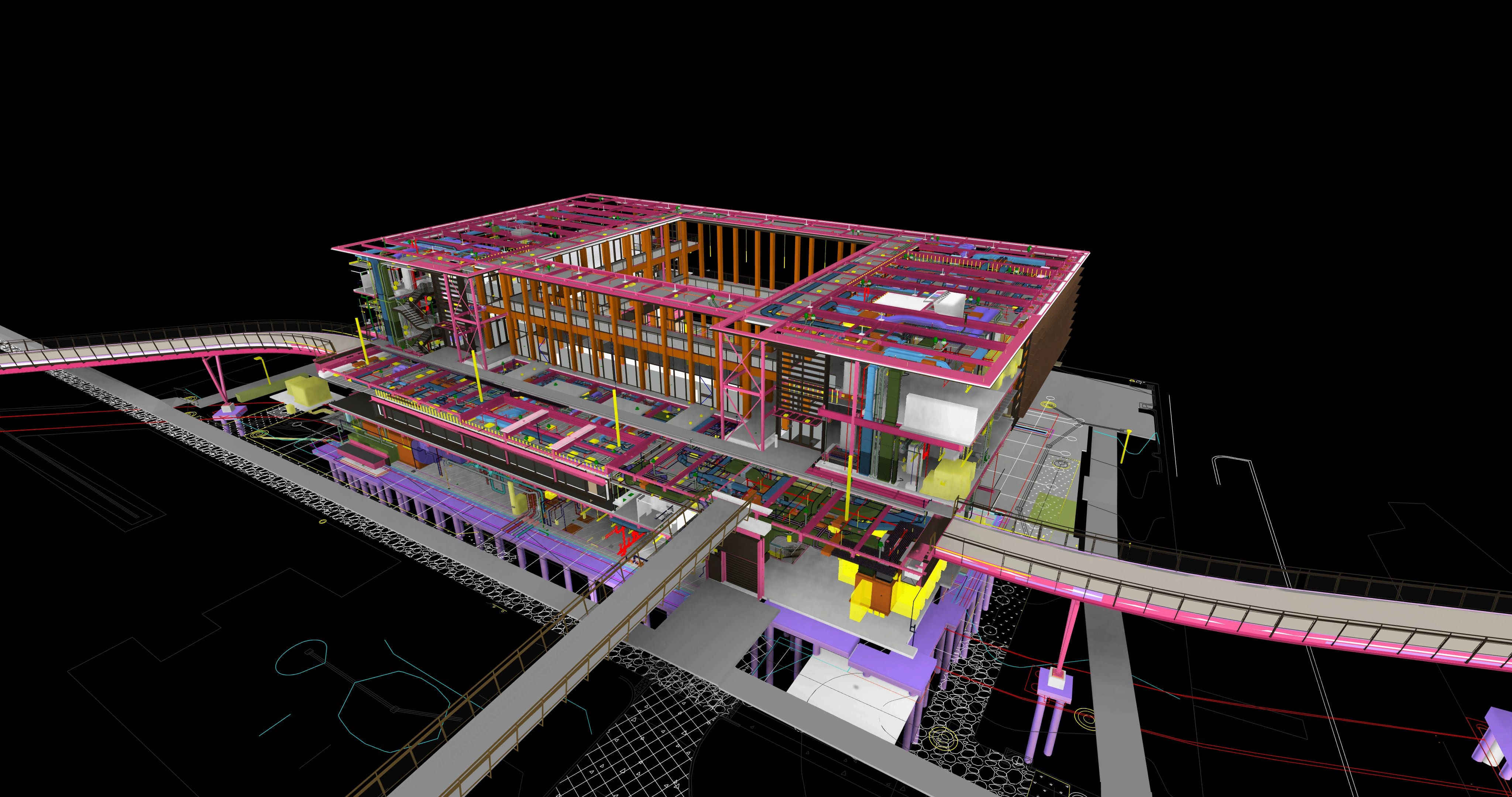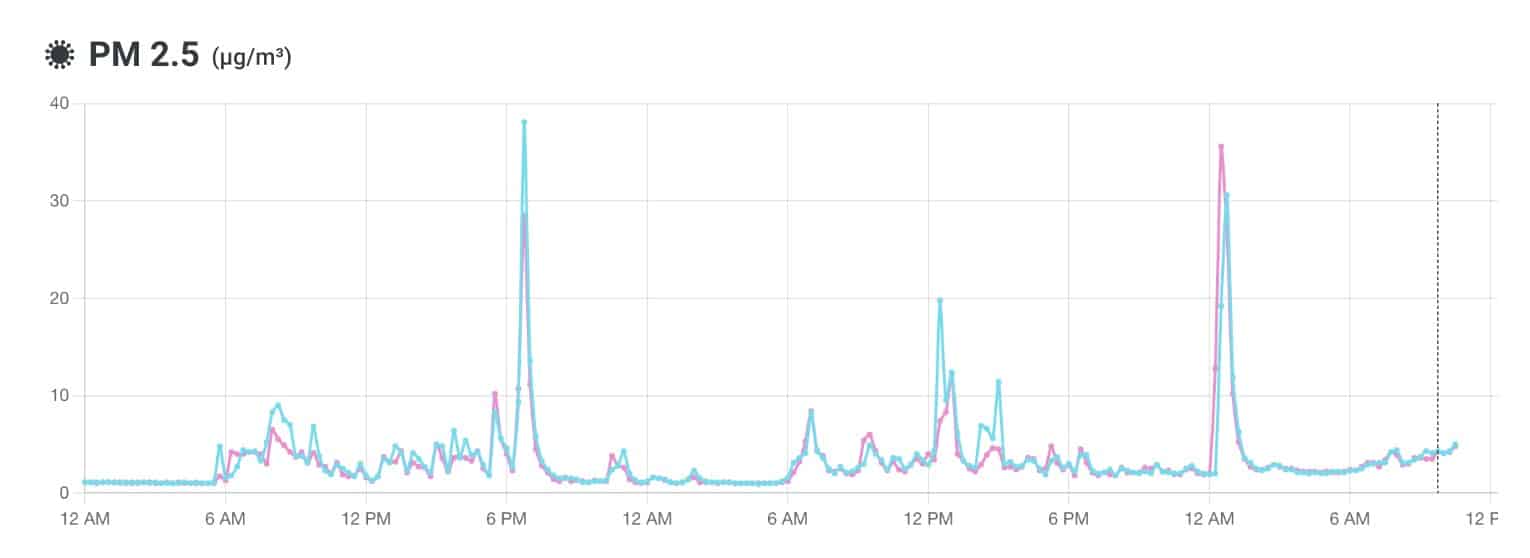Helping business owners stay ahead of the competition and expedite digital information on their construction projects starts with investing in the latest technology. According to Deloitte’s 2021 engineering and construction industry outlook, 76% of engineering and construction executives indicated an increase in the use of technology on the job site for the following year. Implementing new data-driven technology into the building strategy streamlines collaboration, decision-making, and project execution.
As the application of virtual design and construction (VDC) technology becomes more ubiquitous, evaluating the benefits in practice helps clients prioritize needs on the job site. The University of Virginia’s Contemplative Commons project has integrated multiple cutting-edge technologies including Building Information Modeling (BIM), Virtual Reality (VR), and noise and air quality sensors. These technologies streamline the process and enhance communication across the project team, ultimately bolstering performance and client satisfaction.
Building Information Modeling (BIM)
Building Information Modeling (BIM) allows the client to see the project virtually complete before construction commencement. Utilizing BIM early in the construction process facilitates collaboration and coordination to guide informed design decisions. With BIM, all participants can add commentary on the project to the same model instead of multiple versions with 2D paper drawings. A common misconception is that BIM only encompasses 3D design work. In reality, BIM takes care of creating and managing all of the information about the project’s life cycle. Even when the project is complete, turning over the BIM model to the facilities management team provides invaluable intel on the building’s MEP systems, specifications (finishes, lighting, furniture), and architectural details if future renovations are of interest.
Take a look at the image below showing a BIM model of the Contemplative Commons building at the University of Virginia. This is shown to the client in which the structural and MEP systems are discussed.
 BIM model showing the structural and MEP systems for the UVA Contemplative Commons project.
BIM model showing the structural and MEP systems for the UVA Contemplative Commons project.Virtual Reality
Virtual Reality (VR) plays a role in finalizing the visual aspects of the project. It takes the client one step closer to viewing the final product before the first shovel hits the ground. After the client views the BIM model, the next step would be to virtually walk through the structure. This is where VR really brings the project to reality. By wearing a VR headset, the client can experience and walk through a project virtually. VR is also used to compare design decisions, like what type of countertops should be used or what color paint looks best. With the click of a button, the material of a countertop can change from granite to marble, and the paint color can change to whatever color the client is interested in seeing.
Data Collection Devices
Data collection devices are aiding construction companies by gathering more accurate and higher-quality data from the job site. The Construction Engineer Management (CEM) Program at UVA is conducting research using the Awair Omni monitoring system on the Contemplative Commons job site. The monitors are measuring noise levels, CO2, PM2.5 and VOC levels (air quality metrics), as well as temperature, humidity, and lighting. However, the focuses at Contemplative Commons are noise and air quality metrics.
Currently, there are about 6-7 environmental quality monitoring sensors on the job site. Data is collected every 10 seconds, having started at the beginning of December 2022 and continuing through the end of April. The data will provide metrics to see when the environmental quality exceeds the OSHA/ASHRAE guidelines and identify how these metrics change according to the activities on the site. As data continues to come in, it will provide feedback to the construction management team on when and what locations need improvements and which areas could be made healthier for workers.

Technology Delivers Results
Investing in the latest technologies on the job site is a smart business strategy. The key is finding which technical tools help the client reach the final goal. Creating a BIM model produces a precise visual of what the project will look like at completion and save the client time and money by catching any potential issues early in construction. VR ties everything together for one final “walk through” for the client to see every detail before construction begins. Not all technology needs to be as technical as BIM and VR. Bringing in monitors and sensors to record site conditions provides easy access to real-time data to protect job site workers and keep the surrounding community as healthy as possible. These cutting-edge technologies are drastically changing how the industry operates and how future projects will be completed. Implementing these on your next construction project will reap benefits for the overall success of the project from all perspectives- reporting, budget, schedule, and team collaboration.
Previous Post Next Post